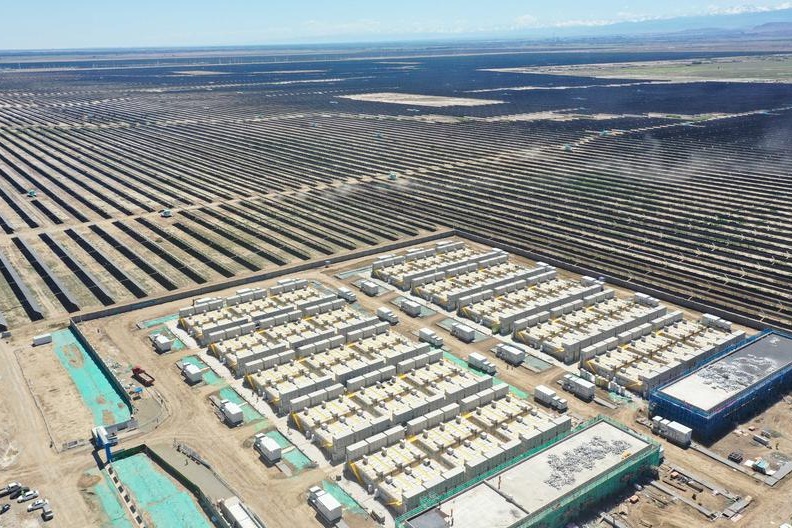China doesn't violate but protects IPR

As 2020 approaches, US tariffs on Chinese goods have reached levels not seen since the US Smoot-Hawley Tariff Act of 1930, which played a key role in exacerbating the Great Depression. A key complaint of US President Donald Trump is China's failure to respect intellectual property rights. Trump and his trade advisers regularly accuse China of stealing US inventions, designs and other forms of IP without compensation, and many media outlets repeat these allegations as a matter of course.
There was a time when one could walk down a street in Vietnam, India or Mexico and easily find pirated foreign movies and music on DVDs and CDs. Now that everything is digital, pirating has become less visible to tourists, even though it is probably no less rampant than before. Still, IPR protection is weaker in developing countries than in advanced nations. The question, then, is whether China's IPR record is better or worse than what one would expect for its income level.
For systematic data on such questions, we examine countries' outbound royalty and license fee payments to foreign patent, copyright and other IP holders, which is included in the balance of payment data compiled by the International Monetary Fund.
These data reveal that a country's income level and IP payments are tightly linked, with a clear positive linear relationship (when both are measured in logarithm). On average, a 1 percent increase in per capita income is associated with a 1.85 percent increase in per capita IP payments. The implication is that as a country grows richer-and as its economy becomes more technologically sophisticated and capital intensive-its IPR protection regime tends to strengthen. In the 19th century, for instance, the United States was accused of violating British IPR.
If Chinese companies were systematically using foreign IP without compensation to a greater extent than other countries at a comparable income level, China's IP payments would be low for its income level. Yet when we created a time series for China's per capita IP payments between 1997 and 2017, we found that this was not the case. Before China joined the World Trade Organization in 2001, its IP payments were below the international average for countries at a comparable income level. But every year since its accession to the WTO, its IP payments have exceeded that average.
China's rapidly increasing IP payments have tracked its overall growth rate. In 2000, the last year before it joined the WTO, its total IP payment to foreign entities was just $1.3 billion; by 2017, it had grown to $28.7 billion, implying a 20 percent average annual growth rate. In comparison, the median annual growth rate of IP payments across all countries during the same period was just 9.5 percent. China's IP payments have been growing at a significantly faster annual rate than that of France (7.9 percent), the Republic of Korea (6.5 percent), and Mexico (-1.9 percent). India, with a population comparable in size to China's, has experienced a comparable rate of growth in IP payments; but its total IP payment, at $6.5 billion in 2017, was just 22 percent of China's.
Another way to gauge the effectiveness of China's IPR protection is to look at where multinational companies locate their operations. Multinationals are not stupid. They are not inclined to enter markets where their IP will be expropriated on a massive scale. In 2018, with the trade war already well underway, China was the top destination for foreign direct investment among all developing countries (as was the case in each of the previous 10 years). In fact, among all countries, only the US attracted more FDI.
Some could say that, compared to the US and other high-income countries, China is not doing enough to protect IPR. Its IP regime could certainly be made stronger, and its per capita IP payments could be increased. But one could also say that China is doing exactly what is expected of a country at its income level. Indeed, its IP payments have long exceeded the international average. And as it becomes richer, the record suggests that its IP regime will grow stronger.
A final question is whether an agreement can be reached between China and other countries over IP. One key factor will be the pace of innovation within China. Chinese enterprises have made massive investments in research and development, and they are quickly increasing their own innovative output. The number of patents registered by Chinese enterprises is growing exponentially. Even if one does not trust official Chines e figures, a similar trend can be found in US patents granted to Chinese companies.
The accelerating pace of innovation within China should improve the prospects for cooperation on this issue. Whereas stronger IPR used to mean higher rents for foreign companies, now those same protections will benefit Chinese companies, too.
China's IP regime is far from perfect. But available evidence casts serious doubt on the claim that IP expropriation is unusually rampant in China. Once the US can put the problem in proper perspective, greater cooperation with China in this area will look more promising. Which, in the end, will benefit both sides far more than a tit-for-tat escalation of tariffs.
Project Syndicate
The views don't necessarily reflect those of China Daily.


Today's Top News
- Xi meets Spanish king in Beijing
- Xi holds welcome ceremony for Spanish king
- Astronauts' return mission proceeds smoothly
- Vocational education helps youth break the cycle of poverty
- GBA goes from bold blueprint to living reality
- Giving a human touch to tech innovation






























